Wild carrots, or Queen Anne’s Lace (latin name: Daucus carota), as they are often called, are both medicinal and edible weeds.
Unlike its look-alike, poison hemlock, this plant can be used fresh and in dried form to make healing tea, herbal infusion, and sweet jelly.
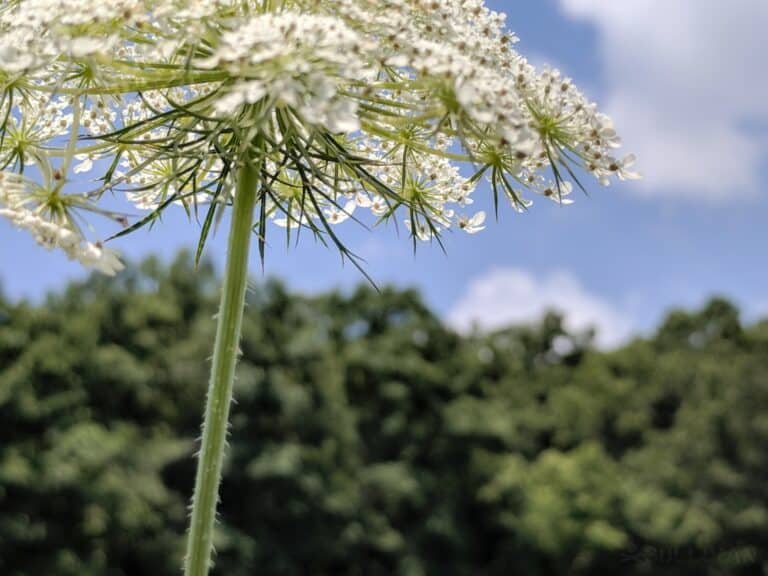
Queen Anne’s Lace was brought to the United States by European pilgrims who used the medicinal weed for stomach problems, as a diuretic, and as an early form of birth control.
It is found in North America, primarily Canada and the United States. You can also find it naturalized in Asia and Australia.
American colonists also boiled wild carrot roots to make wine. Jewish, Hindu, and Irish communities used Queen Anne’s Lace as a sweetener in pudding and other baked goods because of its high level of sugar compounds.
The roots of the plant boast the smell of cultivated carrots. For hundreds or possibly thousands of years, this member of the carrot family was intentionally grown and eaten as a conventional vegetable, especially in ancient Rome.
As legend has it, the roots were boiled and consumed in ancient times to help increase both fertility and sexual desire.
Queen Anne was an avid lace maker and once, as the story goes, pricked her finger, and a single drop of blood landed on the lace she was making.
Wild carrots were soon dubbed Queen Anne’s Lace all over Europe because they had a lace-like appearance with a purple to red single spot slightly off center.
Wild Carrot Facts
- Wild carrots are biennial plants that typically grow about two feet tall, and have shallow roots.
- The roots of Queen Anne’s Lace plants typically have a more potent carrot smell than the rest of the plant.
- Wild carrots most often grow in pastures, hay fields, and along the sides of the road in full sun areas.• The flowers hit their peak bloom in July, and should be harvested at this time, and used or dried to preserve them for survival medicine purposes or in dried form.
- The shoots and stems of the plant should be harvested in the spring, before the flower head goes into bloom.
- The flower clusters on wild carrots are often fried or sautéed to eat alone or as part of a soup, stew, or casserole recipe. The flowers have a sweet carrot taste.
- The cooked roots have a mild carrot taste, and a stringy and somewhat thin texture once boiled in preparation for eating.
- Dry roasted and powdered roots from a Queen Anne’s Lace plant can be used as a coffee bean substitute.
- Essential oil made from wild carrots is often used as both a flavoring for various food dishes, and as an active ingredient in anti-wrinkle face creams.
- Queen Anne’s Lace seeds can be purchased to grow in a garden if the weed does not grow wild in your area. Seeds should be sown in August so the winter cold can stratify them, but they can also be planted in early April.
- Seeds from a Queen Anne’s Lace plant are harvested in the early to middle of fall, before the first hard frost.
- During its first year of growth wild carrots form a rosette of leaves during the spring and summer months to help bolster the taproot that houses the sugar stores the plant will need to keep it strong and healthy and able to grow into its second year.
- You can often see wild carrots also called a garden carrot by enthusiastic foragers.
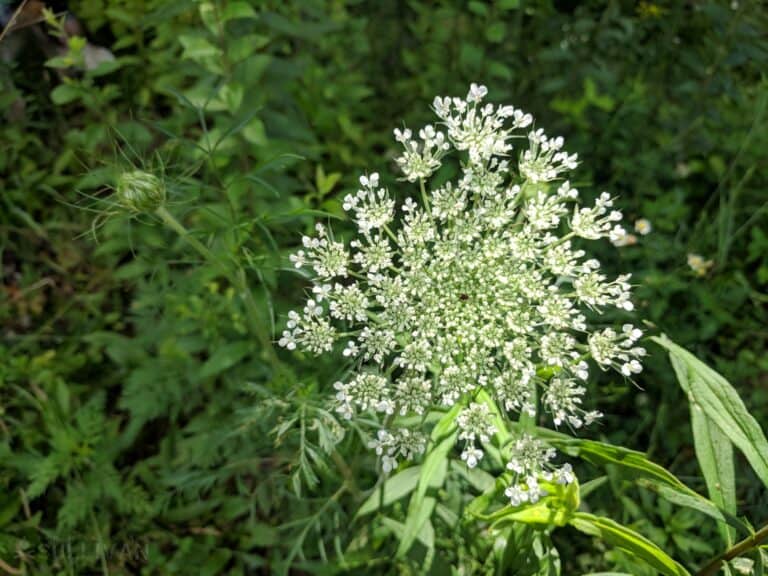
Properties and Uses
- Porphyrins are some of the most potent active ingredients in Queen Anne’s Lace plants. These natural compounds help stimulate the pituitary glands, and may also cause an enhanced release of sexual hormones.
- Wild carrots are used in natural remedies to soothe and cleanse the digestive tract, and help support proper functioning of both the kidneys and liver.
- This edible and medicinal weed has also been consumed as a natural alternative to the “morning after” pill.
- Essential oil derived from wild carrots is frequently used as an active ingredient in natural lip balms and dry skin creams.
- Several Native American tribes used wild carrots to treat snake bites, and nicknamed it the “rattlesnake” plant. They chewed the above ground portions of the plant to make a chewed poultice that could be applied to the snake bite.
- The Navajo and Nez Perce tribes used both raw and boiled roots from the healing plant to rub onto the skin to stop itching and to consume as a blood cleanser.
How to Identify Queen Anne’s Lace
Flowers on wild carrots are white, and boast a dainty texture, hence the nickname referencing lace.
Almost always, a purple to reddish flower is situated just off center in the flower head:
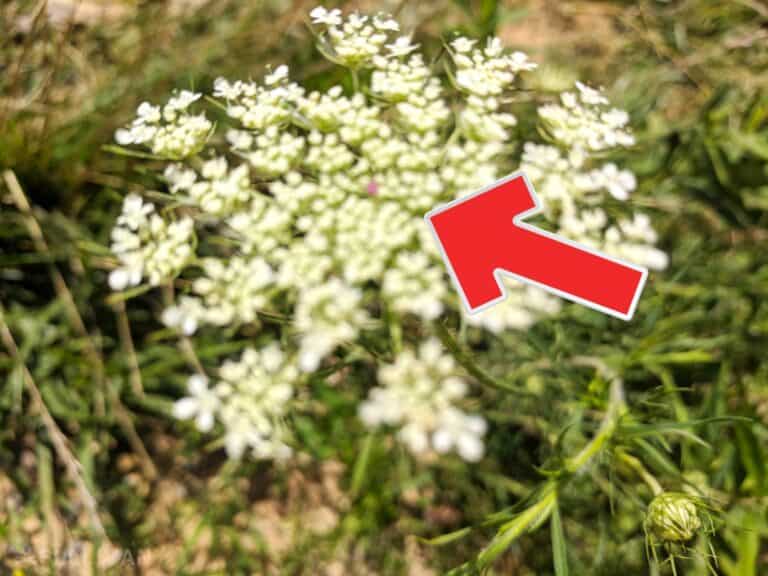
Stems of Queen Anne’s Lace plants are hollow, rigid, and have fine white hairs with a whiskers-style texture:
There are no purple splotches on the stems as there are with their deadly look-alike poison hemlock, nor are the stems smooth and hairless like their other near twin, wild yarrow.
Wild carrot flower heads have an umbrella shape when open in full bloom, and look like an unopened umbrella before they reach this stage.
The flowers on the medicinal weed create a flat-topped clustered appearance and when they are turned upside down they flower head is dome shaped.
Blooming typically begins near the end of spring, and the Queen Anne’s Lace plants remain in this state until the early weeks of fall.
Once the blooming stage has been completed, the wild carrot flower heads will close back up, and remain this way until they day off as the days turn shorter and colder.
The leaves on the healing plant are feathered in textured, but no so distinctively or finely as they are on either poison hemlock or wild yarrow.
Roots are light brown in color, typically:
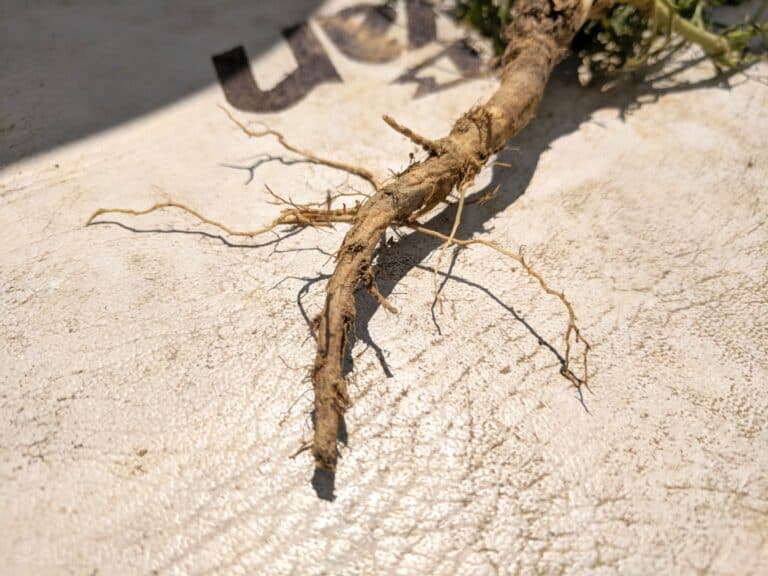
The Dutch once bred Queen Anne’s Lace to cultivate an orange root color to pay homage to the royal family.
Queen Anne’s Lace Tea Recipe
Ingredients
- 1 cup water
- 1 tsp wild carrot leaves
Instructions
- Steep the leaves from the medicinal plant in 1 cup of water for 5 to 10 minutes.
- Strain away the natural matter, but keep the hot liquid.
Wild Carrot Jelly Recipe
Ingredients
- 4 cups water
- 18 flower heads medium to large
- 3 ½ cups sugar
- 1 package pectin
- ¼ cup lemon juice
Instructions
- Put the water in a large cook pot and bring it to a boil.
- Add in the wild carrot flower heads.
- Strain the mixture after sustaining the boil for two minutes.
- Put the liquid back into the cook pot and pour in all of the other ingredients.
- Bring the mixture to a boil again.
- Pour the Queen Anne’s Lace jelly into glass jars with firm fitting lids, and store in a cool dark place until ready to use.
Are There Any Side Effects To Consuming Wild Carrot?
As with most wild edibles, it is important to exercise a modicum of caution when consuming. Even the items that are safe to eat can trigger an allergic reaction. According to WebMD, wild carrots interact with medications that create sensitivity to sunlight.
Some individuals develop rashes or an irritation when physically exposed to the flower or handling wet carrot foliage.
While these cases are rare it is still advised to talk to a medical professional and perform a small test on yourself by rubbing part of your arm with the actual plant. If there is going to be an external reaction you will start to see it relatively quickly upon skin contact.
They’re Not All Bad Side-Effects Though
The good news is that wild carrot seed oil has some good side effects as well. Making an infusion of the seed oil can help with a variety of illnesses and symptoms, including:
- Helping relieve diarrhea
- Aids in the treatment of dropsy
- Reduces the symptoms of indigestion, digestive disorders, and is a carminative agent for flatulence
- Increases the flow of urine
- Supports the removal of waste through the kidneys
- Releases high levels of sex hormones
- Soothes and used in the treatment of various complaints regarding bladder diseases
- Helps improve vitamin a levels
There are even some remedies for threadworms that you can create from the cultivated form of Queen Ann’s Lace.
As with any wild medicinal plant, be sure to do your own diligent research as you don’t want to confuse them with lookalikes.
It Has A Variety Of Functional Uses
You’d be surprised at how many commercial items contain wild carrots in them. In particular, wild carrot seeds are turned into an oil that is used as flavoring in food and beverages. If you’ve ever had commercial baked goods or vegetable soups you’ve probably consumed wild carrot seed oil.
Additionally, it has a lovely aromatic seed that gives an earthiness, much like nutmeg, to many meat dishes. A perfect ingredient if you are low on root vegetables but still want the flavor.
Running low on coffee? The dried, roasted roots can be ground into a powder and steeped in water.
Commercially, wild carrot seed oil can be found in various soap products as well as anti-wrinkle creams, and perfumery.
Warnings
- As noted above, pregnant women should not consume or use wild carrot.
- Use of Queen Anne’s Lace could cause dermatitis and / or hypersensitivity to the sun in some users.
- Wild carrot remedies and consumption may cause a negative reaction with prescription blood pressure medications.
- Use of this healing herb could also cause a negative reaction in people who are engaged in hormonal therapy or on a hormone medication.
Disclaimer and Final Words
I am not a doctor or medical professional of any kind. The information about wild carrots – Queen Anne’s Lace is shared simply for educational and research purposes. It is always recommended to check with your doctor before undertaking any type of herbal remedy.
During a SHTF situation, we may need to take care of our food and medical needs entirely on our own.
Learning about the healing plants, herbs, weeds, and roots offered by nature could prevent starvation, sickness, and treat serious injuries.
Remember, never forage in areas that you are not absolutely sure are free from chemical sprays.
Have you used Queen Ann’s lace before? Let us know in the comments below, and be sure to pin this on your favorite Pinterest board!
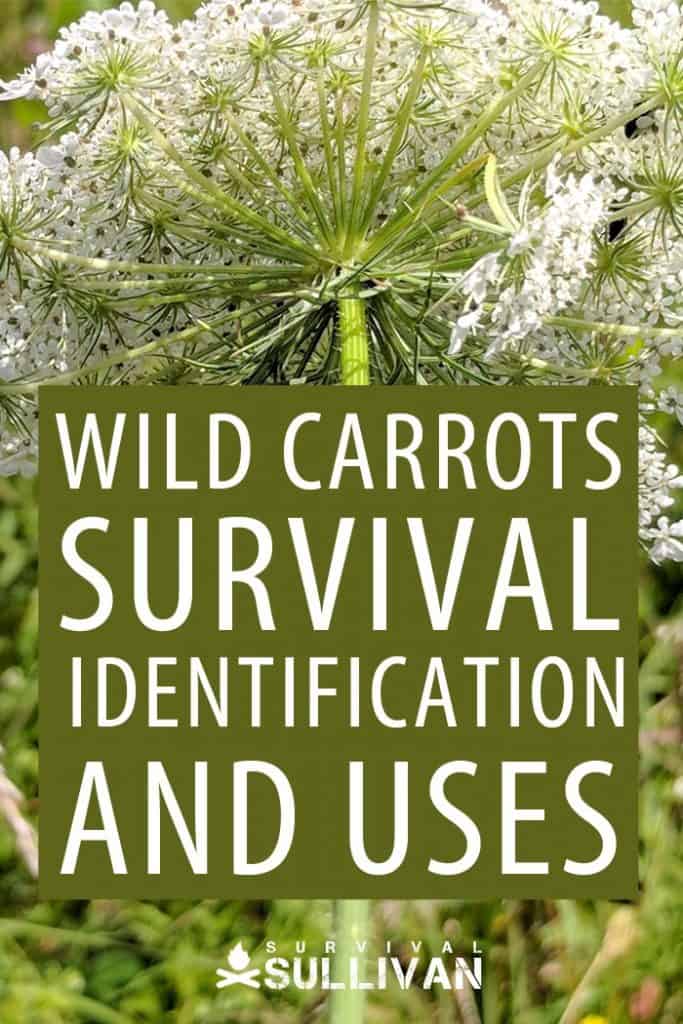

Tara Dodrill is a homesteading and survival journalist and author. She lives on a small ranch with her family in Appalachia. She has been both a host and frequent guest on preparedness radio shows. In addition to the publication of her first book, ‘Power Grid Down: How to Prepare, Survive, and Thrive after the Lights go Out’, Dodrill also travels to offer prepping tips and hands-on training and survival camps and expos.

Great information on yet another healing plant ?